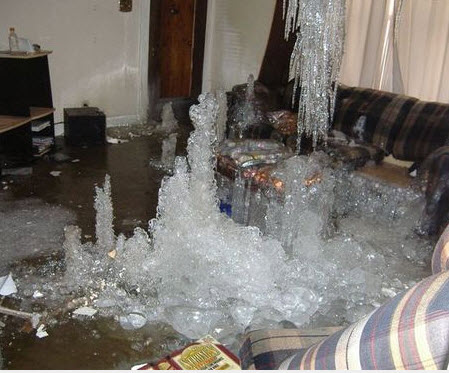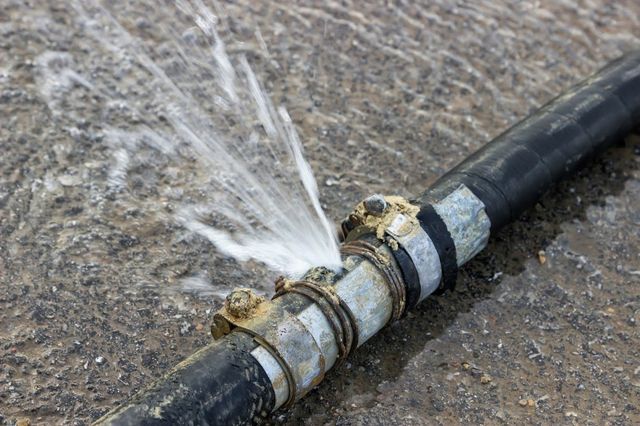Key Septic Tank Maintenance Advice Every Homeowner Should Know
Key Septic Tank Maintenance Advice Every Homeowner Should Know
Blog Article
They are making a few good pointers on the subject of The Do’s And Don’ts After Water Damage as a whole in this post down the page.

What should you do if a pipes bursts in your residence? Do you desire a mini-waterfall and also flooding in an area of your residence? If you find yourself in this scenario, you should act quick. The longer you wait, the a lot more serious the damage that can happen to your home. The presence of mind is key in these events. For these reasons, you require to find out just how to act in the event of a burst pipes. Due to the fact that time is of the significance, inspect out the following tips listed below to aid you act quick.
Turn off the Key Waterline Valve
Look for the neighborhood shut-off valve to transform off the water in one specific location only. If you do not know where the local shut-off valve is, go for the primary water line shutoff and transform it off. Generally, the main shutoff is found outside the house following to the water meter.
Call Water Damage Reconstruction Pros for Help
After closing the water source, call the experts for aid. Because the pipes required to be fixed as well as there is a demand to attend to the various other problems to your residential or commercial property, this circumstance is not something you can do some Do it yourself. If you can not cope, look for aid from a reliable business supplying 24/7 emergency services. With their specialist help, you can avoid much bigger water damage including deformed baseboards, loosened tiles, or harmed structures. Do not take this trouble lightly and seek specialist advice for your complete satisfaction and a reputable remedy.
File the Damage For Insurance coverage
While you're waiting on the pros to get here, obtain some documents of the damages brought on by the wayward pipeline. Take images and also video clips of every little thing. Do close-up shots of the harmed prized possessions and also places. Your documents will certainly work as evidence for your house owner's insurance. Maintaining aggressive with this scenario assists you to file a claim for coverage, which will better sustain you and also your family members to return on your feet.
Recover Points That Can Be Saved
When you're done taking pictures, take a look at the harmed products and obtain one of the most crucial ones from the stack. Dry them off in a dry/warm place far from the damaged area and attempt to protect them as much as you can. Drag as much dampness as you can to the material so it can start to dry.
Begin the Drying Process
The good news is, the water from your waterlines is currently tidy so you do not have to fret regarding sewage system water. The flowing water may have disturbed the dirt and also particles in your floorboards as well as carpets. Blot out as much water as you can from the surface areas with old towels.
Experts are the only individuals certified to examine correctly and also repair the burs pipelines and also succeeding damages. As always, pipelines don't simply all of a sudden break out of the blue. They generally provide quiet red flags like gurgling paint, water spots. Weird sounds in the plumbing, caving ceiling, musty odor, or peeling off wallpaper. Keep in mind of these indications and do some preventive measures so you can nip any kind of issues in the bud.
What should you do if a water pipeline bursts in your house? For these factors, you require to discover just how to act in the event of a burst water pipeline. After closing the water source, call the professionals for assistance. With their specialist assistance, you can protect against a lot larger water damage including distorted walls, loosened floor tiles, or harmed structures. Fortunately, the water from your waterlines is already tidy so you do not have to stress about sewer water.
How to Handle a Burst Pipe and Minimize Damage
Steps to Take Ahead of Time
If you own property in an area that experiences cold weather, you need to be aware of seasonal maintenance tasks that will help you protect your property as the weather changes each year. One of the most important steps is to winterize your pipes to ensure they won't freeze or burst when the temperature drops. This includes action items like insulating any exposed pipes, detaching garden hoses and covering outdoor faucets. If the weather gets cold enough, you may even consider leaving a faucet dripping or opening cabinet doors during the coldest parts of the day.
No matter how prepared you might be, accidents and emergencies still happen. You'd be wise to set up a savings account specifically for your property so you have a "rainy day" fund set aside for unexpected expenses. All homes—regardless of age, location or condition—will inevitably need some form of emergency repair.
Steps to Take for Frozen Pipes
A frozen pipe will not necessarily burst, so if you can catch a frozen pipe early on, you could save yourself a major headache. When your area experiences frigid temperatures, be sure to check your plumbing and keep an eye out for warning signs like faucets only releasing small amounts of water or toilets not refilling when flushed. If you do run into one of these issues, you're likely dealing with a frozen pipe.
If this happens, your first step should be to cut off the water supply to that section of the plumbing. Expanding and freezing water can quickly cause damage. Even if the water supply is shut off, you will likely still deal with some leaking from the water that defrosts after the pipe has thawed. Be prepared with a mop, bucket and/or towels to quickly soak up any excess water.
In order to thaw a frozen pipe, you can use a space heater, infrared or incandescent heat lamp, or even a hairdryer to warm up the frozen area. Heat tape is also an option and should be used according to manufacturer instructions. Do not use any sort of open flame to thaw frozen pipes, as it poses a major fire hazard and can damage your pipes further.
Steps to Take for a Burst Pipe
Water damage claims are the second most common insurance claim in the U.S. When you're dealing with a frozen pipe, the water continues to expand as it freezes, which creates pressure that can cause a pipe to burst. When this happens, the crack or leak in the pipe allows water flow from the pipe to enter your home where it shouldn't. If a pipe does burst, you need to act quickly to mitigate property damage and repair cost.
Your very first step should be to shut off your main water supply to minimize flooding—typically the most expensive damage to address. Once you've shut off the water supply, make sure you identify the entire area that has been impacted by the leak. Remove as much water as possible—as quickly as possible—using a mop, sponges, towels or a shop vacuum or wet/dry vacuum. To prevent long-term damage due to moisture build-up, run a dehumidifier or fan in the affected area. Contact a licensed plumber to ensure the pipe is correctly repaired before running any water to that section of the home again. Burst pipes and the associated water damage are something you absolutely want to avoid as a property owner. If you've had to learn your lesson the hard way, don't let yourself get caught in a similar situation during the next spell of cold weather. The best way to deal with frozen or burst pipes is to prevent them in the first place—proactive winter maintenance will save you time, money and a whole lot of stress.

I ran across that review on Water Damage Restoration Do’s And Don’t when browsing on the web. Sharing is nice. Helping people is fun. I praise you for your time. Visit us again soon.
Report this page